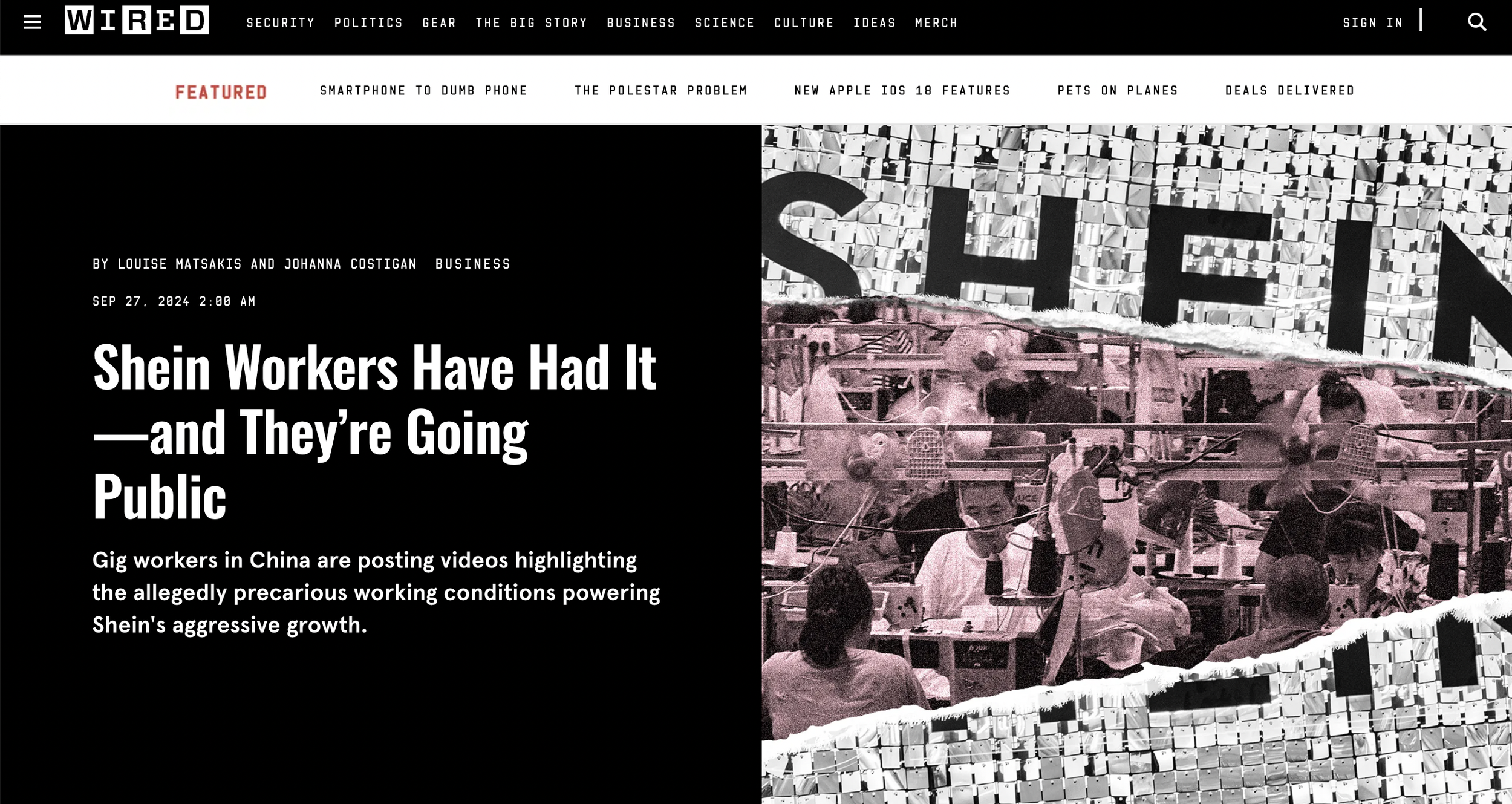How Shein Cuts Costs by Relying on Precarious Gig Workers in China
Gig workers in China are posting videos highlighting the allegedly precarious working conditions powering Shein's aggressive growth.
In a video uploaded to the Chinese social media platform Bilibili in October, a Shein warehouse worker in southern China with black-rimmed glasses tells the camera he picked 650 clothing items during his last shift—a feat he claims to have accomplished, in part, by not taking a single bathroom break. The worker says the sacrifice would help him reach his goal of earning 10,000 RMB (nearly $1,500 at the time) a month at his job picking and packing customer orders for Shein, the global fast-fashion juggernaut valued last year at $66 billion.
In a separate Bilibili video posted a few days later, a different Shein staffer says that he is “sweating profusely after picking goods all night,” but he’s grateful, at least, that his team leader is friendly. In a third clip shared to the short-form video platform Kuaishou in November, another Shein worker with long hair pulled back into a low ponytail tells the camera she is having trouble lifting her left hand after completing an 11-and-a-half hour shift at a Shein warehouse. “My first time working in logistics, there won’t be a second time,” reads the caption.
Over the past three years, dozens of purported gig workers at Shein fulfillment centers in southern China have filmed day-in-the-life vlogs like these, sharing with viewers extensive details about their wages, working conditions, and reasons for choosing to take jobs in the logistics industry.
WIRED analyzed more than 30 of the videos from four Chinese platforms tagged with the hashtag Xiyin (#希音), Shein’s name in Chinese. Together, they provide a rare and deeply human glimpse into the meticulously optimized logistics supply chain that allows Shein to send millions of $3 polyester tube tops and $5 pairs of patterned leggings to consumers around the world.
Read the article via WIRED here.
